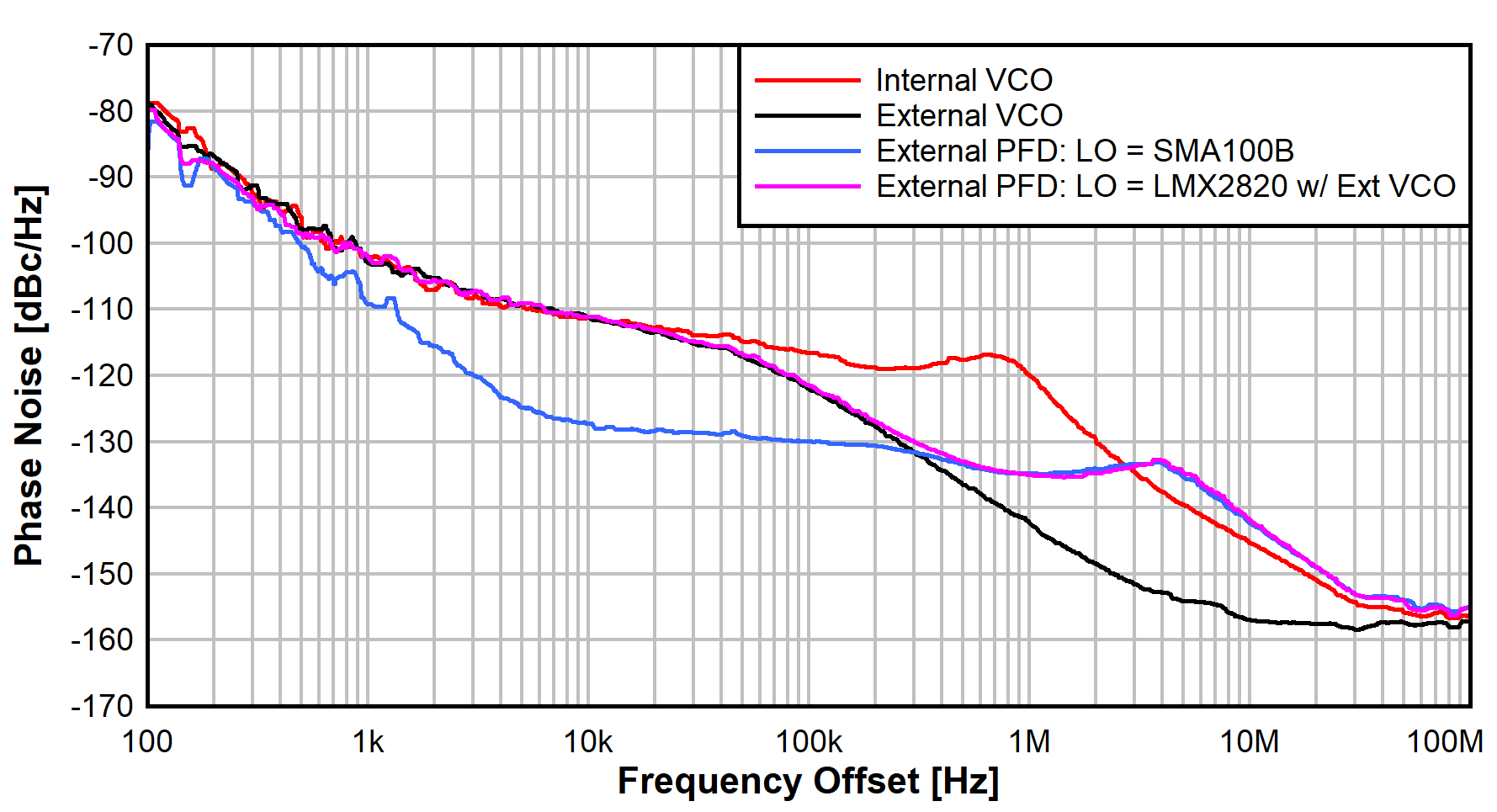SNAA361A april 2022 – may 2023 LMX2820
6.1 Real-World Performance Results
Figure 6-2 shows the phase noise performance of the dual LMX2820 approach compared with the stand-alone external PFD (using SMA100B as the LO), the stand-alone external VCO, and the internal VCO. Table 6-1 shows the comparison of integrated jitter between the different configurations.
 Figure 6-2 Dual LMX2820 Real-World Phase Noise Results
Figure 6-2 Dual LMX2820 Real-World Phase Noise Results| RF Out Freq | Source | Integrated Phase Noise |
|---|---|---|
|
9000 MHz |
Internal VCO |
37.9 fs |
|
9000 MHz |
External VCO |
13.2 fs |
|
9375 MHz |
External PFD (LO = SMA100B) |
13.9 fs |
|
9375 MHz |
External PFD (LO = LMX2820 with Ext VCO) |
18.5 fs |
The dual LMX2820 approach yields an integrated phase noise performance under 20 fs. Though not quite as good as the stand-alone external VCO or external PFD with SMA100B as the LO, it is a significant improvement to the internal VCO and provides a response that is comparable to many high-end signal generators. It is a real-world topology that supports the most stringent communication and defense applications.